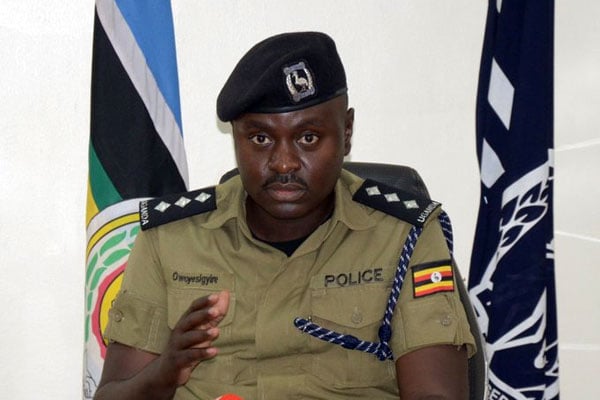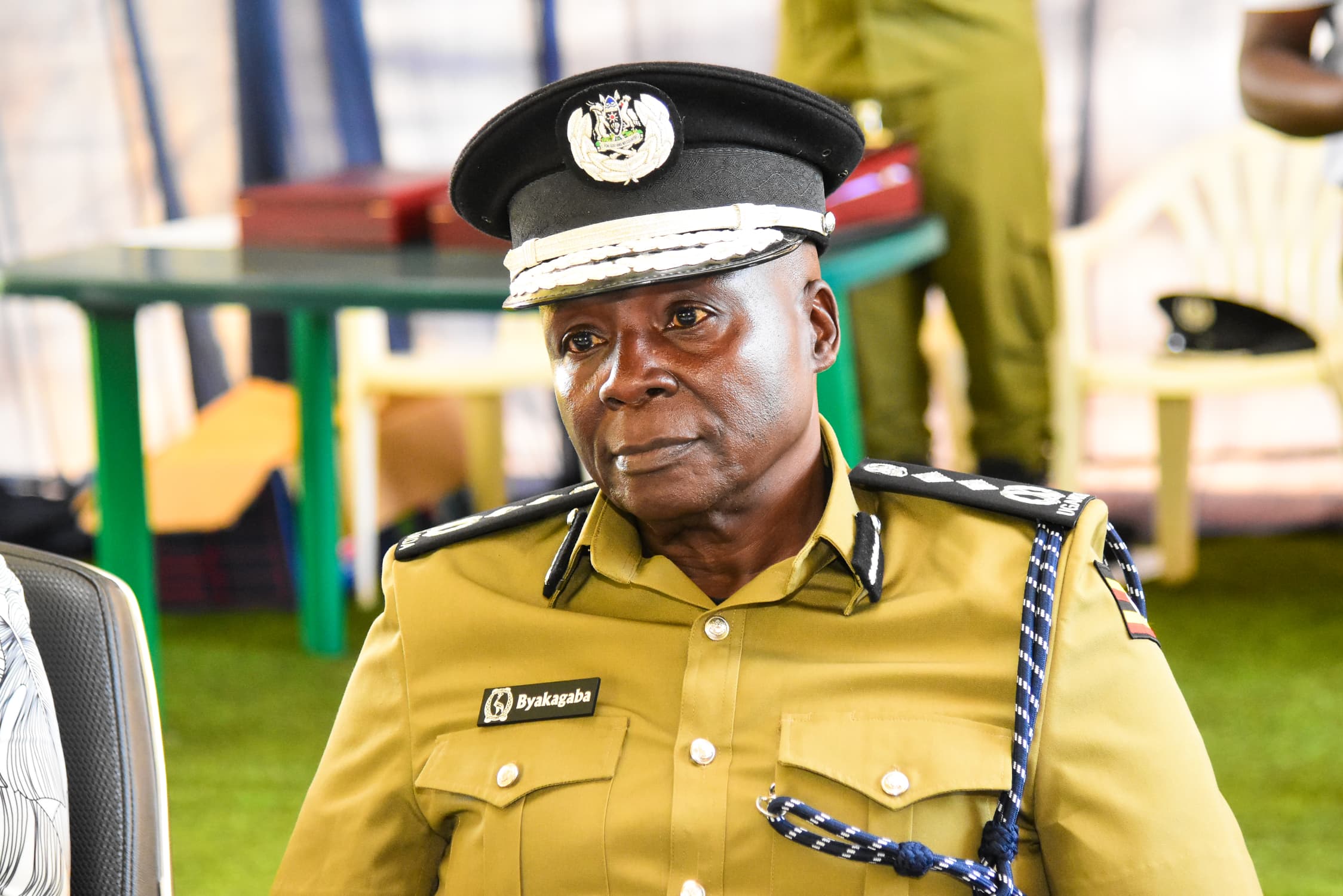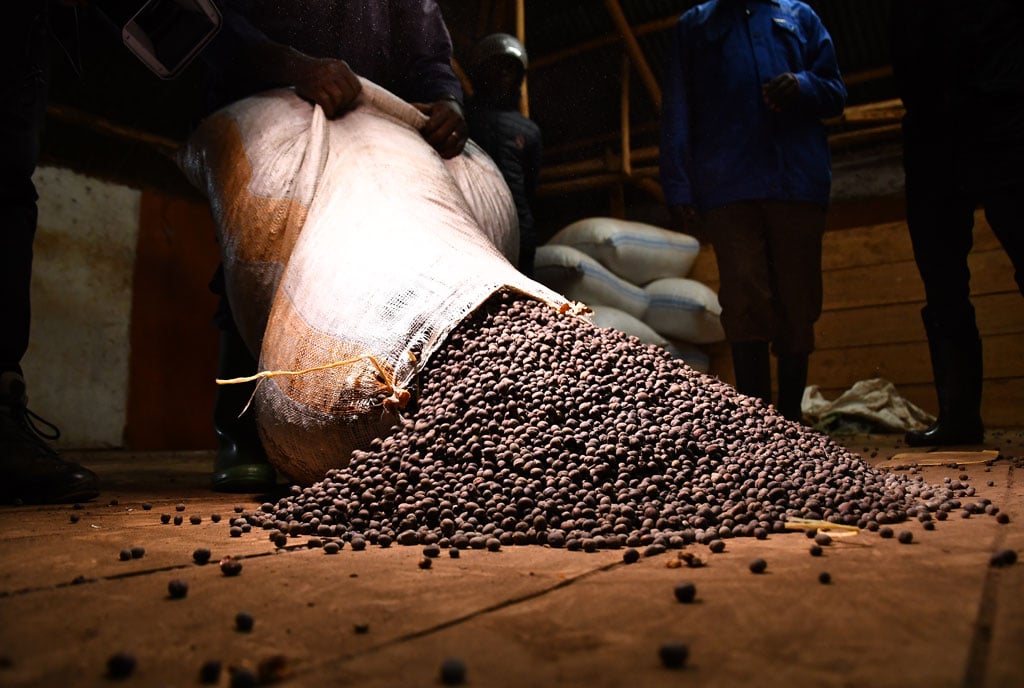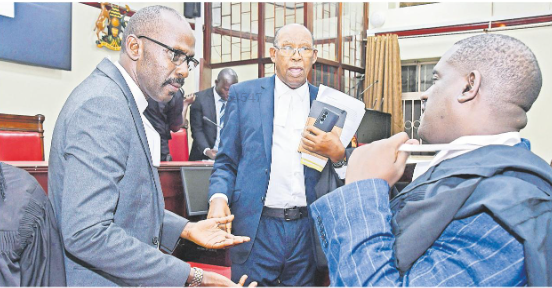
The IGP Abbas Byakagaba inspects a guard of honor upon arrival at the Police Marine Base for the pass out of out 53 marine police officers in Kigo, Wakiso district on 30.08.24. Photo Paul Adude (1)
The new Inspector General of Police (IGP), Mr Abas Byakagaba, is visiting several police directorates, units and commands as part of an initiation programme to understand the strengths and weaknesses of the institution he took charge of in May.
From his office at Naguru Police Headquarters, IGP Byakagaba probably sees residences of more than 1,000 of his low-ranking officers.
The officers in question have spent more than a month fetching contaminated water from wellsprings a mile or so away.
This is after the National Water and Sewerage Corporation (NWSC) turned off water supply to the barracks in July after the Uganda Police Force (UPF) failed to pay water bill arrears north of Shs15b.
While the bill accumulated before IGP Byakagaba came in, it is his responsibility to clear it and connect his officers back to the water system. The water crisis is one of the pointers to the state of the Force. The handover report of former IGP Martins Okoth Ochola gives a real picture of the Force that Mr Byakagaba has been entrusted to turn around.
The report indicates that the UPF has around 52,000 police officers, with the vast majority—around 25,000—carrying out general duties (the ones who wear sport khaki uniforms). The Criminal Investigations Directorate (CID), Field Force Unit (FFU), Anti Stock Theft Unit and Counter Terrorism Unit (CTU) have an average of 5,000 officers each. The rest of the manpower is shared by other directorates and units.
This means the ratio of a police officer to the public in Uganda has increased to one to 900 people, which is still below international standards. The international standards ratio is one police officer to 500 people. In fact, each police directorate reported that there was inadequate manpower, even in critical areas like Counter Terrorism and CID.
Despite the police having less than required manpower, the overstretched personnel they have are also under a lot of financial stress as the government continues to defund the institution.
Downward spiral
Figures from three financial years show a decline in funding for the police by 20.4 percent. In the Financial Year (FY)2020/2021, the Force received Shs1.043 trillion compared to Shs830.67 billion this financial year. The report indicates that the defunding of the police has affected even the basic services like clothing, accommodation and welfare of the officers.
Police are struggling to maintain and feed the existing thin manpower on the ground. According to the report, the police budgets Shs10,000 for feeding each police officer while in the field. On the Shs10,000 budget, a police officer is supposed to have three meals daily. This includes a kilogramme of posho, costing Shs3,100; half a kilogramme of beans at Shs2,170; drinking water at Shs1,500; sugar worth Shs250; condiments of Shs1,770; and fresh food at Shs1,210.
To feed the 25,000 officers deployed per day, the Force needs Shs91.25 billion. Much of that money comes from forcing the police to limit feeding to only police officers in the Anti Stock Theft Unit and FFU. Before the crisis, the police used to provide food each day for all police officers whether they are on duty or in the barracks.
The institution can barely clothe officers. Standards are that each officer gets two sets of uniform annually, each at Shs956,300, totalling to Shs97.6 billion. With the provision of only Shs17.6 billion annually, only 9,000 officers of a Force of 52,000 can be clothed annually.
Worse still, the report shows that 33,688 officers, who make 74 percent of the officers entitled to housing units, don’t have accommodation. And a bigger percentage of officers housed are living in accommodation that hasn't had repairs for a long time.
“Most of the institution-owned housing blocks were constructed decades back and have fallen into a state of disrepair. Almost 60 percent are structures that were constructed in the colonial era (before 1962),” the report reads in part, adding: “It isn’t uncommon to find the problem of families sharing single rooms, divided by curtains or living in spaces initially meant to serve as mortuaries, or kitchens and generally dilapidated and unsightly structures.”
Multiple deficits
Police requested for Shs27.2b to renovate the existing barracks but only Shs600m was provided last financial year. Without any existing structures, the police sought to erect temporary relief accommodation for 10,000 probationer police constables (PPCs) and budgeted Shs70b. Only Shs21b was provided by the government.
The Force faces a double whammy when it comes to housing. As well as their buildings being in dire straits and overcrowded, the government is unable to provide the occupants with basic utilities like water and power. Statistics in the report show that while the police water needs are at Shs27.2b annually, only Shs13.61b is provided in the budget.
“When funds on prepaid water metres get exhausted, the barracks remain without water, which poses a great health risk to the dwellers,” the report also discloses.
DPower prepaid metres behave the same way because Shs19.7b is paid for electricity of the Shs34b required annually. As a matter of fact, Mr Ochola’s report states that most of the police facilities, including the key security installations and the CCTV project, cannot operate within their power budgets. This means load-shedding or rationing the utility to avoid total black outs is the order of the day.
The huge utility bills had been attributed to the expansion of the police services in the countryside due to an increase in the number of districts. For instance, there are now 28 police regions, 186 divisions, 1,552 stations and 1,663 posts in the country. The Force is unable to supply all those units with basic stationery like police forms. The provided funds for procurement of stationery can only take the entire police force for four months a year.
DM crosshead: More grim news
Mr Ochola’s handover report sees that as a source of perceived corruption, especially at the lower units where clients are required to buy police forms. However, the police have dedicated more resources in the procurement of vehicles and anti-riot control equipment. The report indicates that police have a fleet of 10,245 vehicles, majority of them being motorcycles, patrol cars and sedans.
Despite the good number of vehicles, the institution is unable to fuel and maintain them due to budget constraints.
“Each vehicle, on average, requires at least 10 litres of fuel per day at Shs5,500 per litre, translating to Shs205.668b against a provision of Shs46.533b . This leaves a funding gap of Shs159.135b,” the report shows.
Even when it comes to maintaining the fleet, the police were given only Shs16.3b of the Shs65.3b needed. On this budget, police can only maintain the fleet for three months.
President Museveni’s solution to the police financial constraints is to reduce the number of units like police posts at the lower levels in what he called a sub-county policing model.
A budget to implement the President’s sub-county policing model fully is Shs3.2 trillion, which is four times the annual budget of the police, according to Mr Ochola’s report.
“This financial requirement is so huge, thus necessitating adoption of a phased approach, starting with regions with high risk and crime levels; then cascades to medium and low-risk areas,” the report states. “UPF has already started implementing the model in Greater Masaka Region and will be cascading to other parts of the country in a phased manner.”
In this financial year, police planned to establish 30 sub-county police stations at a cost of Shs36.946b , but only Shs9.8b has been released by the government.








